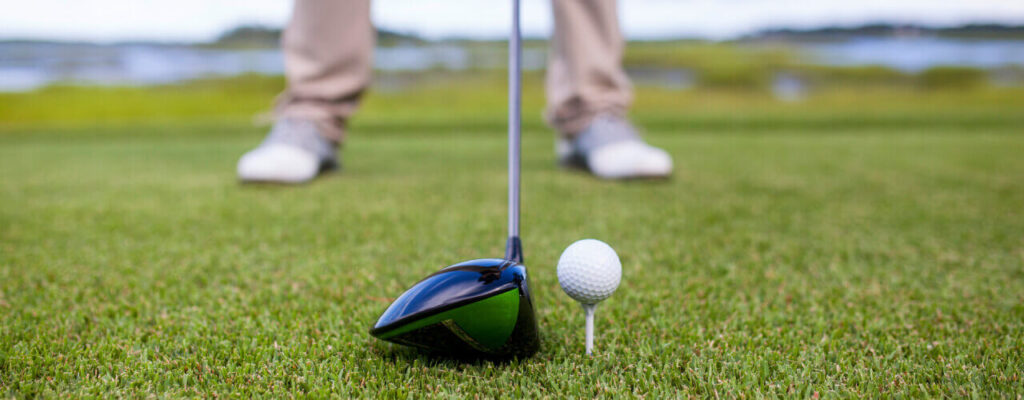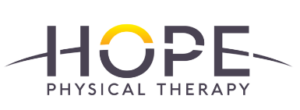Golfers Can Find Hip Joint Pain Relief and Improved Mobility With Physical Therapy

Are you noticing soreness or pain in your groin? Does your back feel better the more warmed up your hips are? Our physical therapists at Hope Physical Therapy understand golfing mechanics and how vital your hips are to swinging a club pain-free!
Golfing requires a tremendous range of motion to swing the club effectively. The golf swing has been associated with increased injury risk due to a lack of motion and strength in the hips. Inadequate spine (thoracic and lumbar) mobility and poor core stability can contribute to hip joint issues and improper swing mechanics. The impaired motion and strength lead to poor swing mechanics.
Most golf injuries are related to overuse syndromes related to a large number of repetitions and poor mechanics. At Hope Physical Therapy, we know how important it is to understand the golf swing mechanics and how important hip mobility and strength are for preventing injury and optimizing performance.
Request an appointment today, so we can help you resolve any old and new injuries and get you back golfing sooner than later!
What function do the hips provide in golf?
Golf is one of the most popular sports people of all ages and abilities enjoy. Although it is often thought of as a mental game due to the frustrations of an inevitable bad swing, the physical requirements due to the repetitive nature of the golf swing are surprisingly demanding.
For the club to hit the ball effectively, golf requires coordination and timing of our muscles and joints to move appropriately. The hip joint, in particular, is critical to achieving a smooth, powerful swing. Limitations in the hip joint due to pain, weakness, or limited motion will not only affect the golfer’s swing it often leads to pain and injury in the joints above and below.
The coordinated action of the golf swing requires the front leg (lead hip) and the back leg (trail hip) to work in concert, performing the exact opposite movements. These movements of the hip joints influence the angular velocity in the pelvis, which simultaneously initiates movement in the spine to create the whole body rotation needed to swing the club.
Any weakness or lack of mobility in the hip joint will not only impact the swing itself but could cause pain in golfers and even lead to an injury that inhibits participation. Thankfully, at Hope Physical Therapy physical therapists understand the physical demands on the hip and how to restore mobility and strength and alleviate pain. We help golfers achieve a smooth swinging motion and eliminate the factors causing your pain.
What are the typical reasons for golfers’ hip pain?
Identifying whether or not the pain is an actual injury requires an assessment by a skilled physical therapist. Our team can identify the underlying issues causing your pain and limitations.
Hip pain is a common issue affecting golfers. Most of the time, pain or injury results from swinging the golf club repeatedly due to the pressure on the hip joint and surrounding tissues, including the muscles. In addition, faulty swing mechanics can lead to pain and/or injury if the swing is not executed correctly.
The most common causes of hip pain in a golfer include:
- Muscle strains and tendinopathy: Trying to hit the ball further can result in a strain due to the excessive force on the tissue. Muscle injuries are often overuse-type injuries due to the repetitive nature of golf.
- Hip labral tears: Excessive force with extreme motion in the hip joint can injure the labrum. The labrum is a ring of cartilage that helps the femoral head (ball) move smoothly within the socket. A labral tear is an injury to this tissue (cartilage) that leads to pain, reduced range of motion, and may cause the sensation of the hip locking up.
- Hip impingement: Femoroacetabular impingement (FAI) is more common in women golfers and occurs when the femoral head (ball) pinches up against the acetabulum (the rim of the socket). Often FAI causes hip mobility deficits and pain. FAI may lead to damage to the labrum and eventually osteoarthritis.
- Osteoarthritis: Osteoarthritis is a degenerative type of arthritis where the hip cartilage breaks down and wears away over time. As this condition progresses, the joint space decreases, resulting in pain and loss of motion.
Although not a direct cause of hip joint pathology, there is some evidence that the lack of motion in the thoracic and lumbar spine negatively affects the hip joint. Inadequate spine mobility influences how the body transmits the forces needed to swing the club. Addressing the thoracic spine lack of motion has been shown to reduce pain in the hip joint.
Another common concern is a weakness or lack of stability in the core musculature. Weakness or improper timing of the muscles can create compensatory movements. These unnatural compensations may lead to pain in the hip joint as it attempts to control the massive swing velocity without adequate support from the core.
Fortunately, our team of physical therapists at Hope Physical Therapy are movement experts with proven success in treating golfers with all forms of pain and injury. We can help identify any limitations or weaknesses you may have and give you the tools to resolve them!
Our physical therapist can help you find hip joint pain relief
Developing a plan to improve and maintain hip rotation mobility is essential for optimizing performance. At Hope Physical Therapy, our physical therapists will perform a golf-specific movement screen to identify any limitations related to your pain/injury and golfing performance.
These findings will allow us to develop interventions that correct movement patterns and reduce the risk of potential injuries in the future. Our focus initially will be on pain relief techniques and improving any lost motion. We incorporate manual techniques to assist our progress and ensure you move and feel your best.
As you improve, our team will address any weaknesses in your hip, pelvis, and core musculature. Our programs will incorporate golf-specific strength training to address your unique needs. We will ensure you are ready to continue on your own and will include education to ensure you understand the importance and benefits of continuing to work on your therapeutic program even after you return to the links!
Request an appointment at Hope Physical Therapy today!
The hip joint plays a significant role in our ability to swing the golf club correctly. Any limitations or weaknesses can lead to pain and faulty swing mechanics. Fortunately, our physical therapists can give you the tools to help you find relief in your hip joint once and for all!
Call today and schedule an appointment with one of our specialists!
Sources:
- https://pubmed.ncbi.nlm.nih.gov/27105901/
- https://www.jospt.org/doi/abs/10.2519/jospt.2019.8309
- https://www.koreascience.or.kr/article/JAKO201813164518149.page
- https://journals.humankinetics.com/view/journals/jsr/29/4/article-p425.xml

